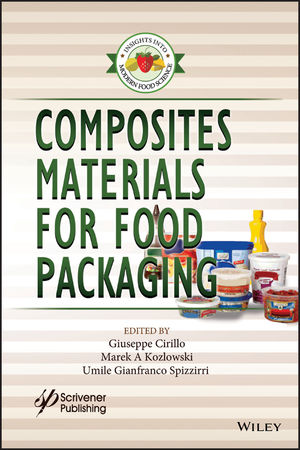TECH FLASH
Sustainable food packaging: waste can be an underutilized resource
Georgia-Pacific’s John Mulahy discusses waste reduction and solutions to implement sustainable measures in the food industry

Consumer pressure is pushing the food industry to continue seeking ways to engage in and improve sustainability.
Recently Georgia-Pacific, a manufacturer and marketer of food packaging and paper, released its “Future of Sustainability in Foodservice” study, which focuses on the manufacturing, use and disposal of packaging materials.
For the study, the company teamed up with research and consulting firm Technomic to better understand the evolving role of sustainability.
Food Engineering interviewed Georgia Pacific Vice President of Sustainability John Mulcahy to discuss waste reduction and specific ways to implement sustainability measures in the food industry.
FE: What are the sustainability concerns and challenges in the food manufacturing/packaging industry?
Mulcahy: Perhaps one of the largest sustainability challenges related to food packaging is in how packaging can contribute to or reduce waste. Waste is a big issue both in the cost associated with its disposal and the impact on a brand’s image. At Georgia-Pacific Professional, we view waste as an underutilized resource, a material that did not go to its highest-value use. With this definition in mind, there are a number of ways waste can be generated. First is in the overdesign of packaging, where more material than necessary is used. Second is the under-design of packaging, where the product is not adequately protected, and there is a resulting increase in food waste. And third is in the material’s disposal. Was it thrown away when it was worth something to someone else?
Another concern is corporate social responsibility (CSR), which we view as a key component of sustainability. Consumers want to do business with operators they view as responsible and ethical. Consequently, these operators are demanding an increasing level of transparency in their supply chain to minimize the risk of one of their suppliers embarrassing them in the marketplace.
FE: How are these concerns being addressed?
Mulcahy: Georgia-Pacific Professional creates sustainable value by using resources efficiently to provide innovative products and solutions that meet the needs of customers, while operating in a manner that is environmentally and socially responsible and economically sound. Eliminating waste is a priority. Innovating around product design and dispensing helps ensure the consumer takes only as much product as needed. Our products help protect the meal and maintain its taste characteristics, reducing food waste. Finally, we continue to work to develop a market for recovered materials such as paper.
As it relates to CSR, we work with our customers to provide them with better knowledge of our controls and can provide third-party validation of where it creates value.
FE: Georgia-Pacific recently published the “Future of Sustainability in Foodservice” study. What are the key takeaways from this report, and how can they be applied to the food manufacturing/packaging industry?
Mulcahy: We worked with Technomic on the development of this report, and it includes some insights from an upcoming Technomic study. For example, there is variability in how consumers describe sustainability, and operators can’t expect to respond to every issue at once. Consumers will prioritize the issues they can best understand, which suggests areas like recycling and waste reduction are great places to start. Operators need to develop a strategy to help them focus on the most impactful areas, those that both address their consumers’ concerns and drive cost savings for their operations.
FE: The report states, “Many are finding that the most sustainable solutions are those that involve the right balance of the social, economic and environmental dimensions of sustainability.” What is involved in each of these dimensions, and how can they be applied to food manufacturing/packaging?
Mulcahy: Sustainability has three dimensions—social, economic and environmental. In making business decisions, we try to find the right balance among these dimensions. The social dimension speaks to how that solution makes people’s lives better, including how the product functions and how people feel about associating with it. The economic dimension is related to how a product affects cost and profitability. The environmental dimension is related to minimizing the impact the product has on the environment. For a product or solution to be sustainable, there must be acceptable trade-offs across all three dimensions. If any of these trade-offs are not acceptable, if it costs too much, or it doesn’t work very well, customers will choose something else.
FE: If a company is looking to become more sustainable what steps should it take?
Mulcahy: Get to know your customers and understand what they value. There are many choices for how a company can become more sustainable, and it’s important to focus on what your customers really care about. Recycling, waste reduction and social responsibility are tangible to consumers and can help reduce your costs. Work with your suppliers to understand what solutions are available and communicate your needs so the suppliers can better meet them in the future.
The full report can be read here.
Looking for a reprint of this article?
From high-res PDFs to custom plaques, order your copy today!









